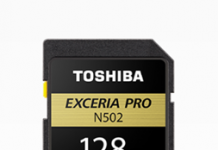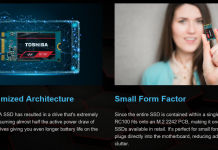|
|
Review: Crucial Reviewed by: J.Reynolds Provided by: Crucial
|
Introduction
Welcome to Myce’s review of the Crucial Ballistix Sport 3000
MHz, 4 x 8GB, DDR4, Gaming Memory (hereafter referred to as Ballistix Sport
Memory).
Crucial (Micron) is one of the world’s most respected memory
suppliers. Will the Ballistix Sport Memory prove to be another excellent
product? Please read on to find out.
Positioning
This how Crucial positions their Ballistix Sport AT Memory -

Specification
Here is Crucial’s specification for its Ballistix Sport AT range
–

I tested the BLS4C8G4D30CESTK DDR4-3000 CL17-19-19, 8GB x 4,
Kit.
Here is a picture of the modules I tested -

I like the look of the neat, low profile integrated heat
spreaders.
Testing Approach
All testing was performed on a Z170 based Windows 10
workstation (CPU - Intel Core I7 6700K @ 4.9GHz, Mobo – Asus ROG Maximus VIII Extreme,
Boot Drive – Intel Optane 900P, GPU – EVGA GTX970).
For benchmarking I use the memory benchmarks provided in the
excellent AIDA 64 Software. For establishing a view on ‘Real World’
performance I use the Creative Tests for Experts and Professionals from Futuremark’s
excellent PCMark 8 software.
To provide a basis for comparison I use the results from the
memory modules that I have previously tested.
I also seek to establish the over clocking potential. I
have always enjoyed over clocking PCs and in years gone by I used to push the
performance of my memory as far as it could go. However this can take a long
time to do as there is no real way of knowing how far one can go without repetitive
testing (and failing) and in recent years I have formed the view that the
returns are not worth a large investment of time.
In my reviews I am adopting a simple approach which usually
gives an easy and safe over clock. Starting with the XMP settings I then simply
select the next higher DRAM frequency from the ladder offered in the BIOS and
see if it runs and remains stable. If it is stable, I then select the then
next higher DRAM frequency and so on until I hit the limit.
If the memory does not support any increase in frequency on
this basis, experience tells me that over clocking is going to be challenging
and will probably necessitate an increase in voltage, whereas if it does
there is likely to be good potential. For a lot of the time this approach does
provide a useful over clock which is safe (as you will see in the performance
results, below).
Performance and Over Clocking Potential
I found that the example of the Ballistix Sport that I
tested will over clock to 3200MHz, whilst only changing the DRAM frequency on
top of the supplied XMP settings (i.e. with timings and voltage remaining at
CL17-19-19 and Voltage at 1.35V respectively). Given this result I feel
confident in asserting that the Ballistix Sport memory has further over
clocking potential to be explored.
Here are the results of my standard tests -
AIDA 64 Cache and Memory Benchmark
3000 MHz, CL17-19-19 –

3200 MHz, CL17-19-19 –

Comparison –


AIDA 64 Memory Read
3000 MHz, CL17-19-19 –

3200 MHz, CL17-19-19 -

Comparison –

AIDA 64 Memory Write
3000 MHz, CL17-19-19 –

3200 MHz, CL17-17-19 –

Comparison –

AIDA 64 Memory Copy
3000 MHz, CL17-19-19 –

3200 MHz, CL17-19-19 –

Comparison -

AIDA 64 Memory Latency
3000 MHz, CL17-19-19 –

3200 MHz, CL17-19-19 –

Comparison -

PCMark 8 Creative
This is how Futuremark outlines the PCMark 8 Creative
Benchmark -
"The Creative benchmark measures your system’s
ability to perform a series of entertainment and media tasks. The Creative
tests generally have demanding computational requirements and are designed for
testing mid to high-range netbooks and desktops. The tests include web
browsing, photo editing, video editing, group video chat, media transcoding and
gaming."
Here are the results -
3000 MHz, CL17-19-19 –

3200 MHz, CL17-19-19 –

Comparison –

This shows that increasing the frequency to 3200 MHz has
increased upon the 3000 MHz result by 0.16%. So it is fair to say that our
‘Real World’ benchmark shows a negligible increase in performance for an over
clock of 200 MHz.
Conclusion
Crucial’s Ballistix Sport AT memory is an excellent
performer with strong over clocking potential and I am delighted to award our
rating of ‘Excellent’.
With Crucial’s reputation for reliability and excellent
support, together with an excellent warranty I am also happy to name the
Crucial Ballistix Sport AT memory as a myce ‘Safe Buy’.



















